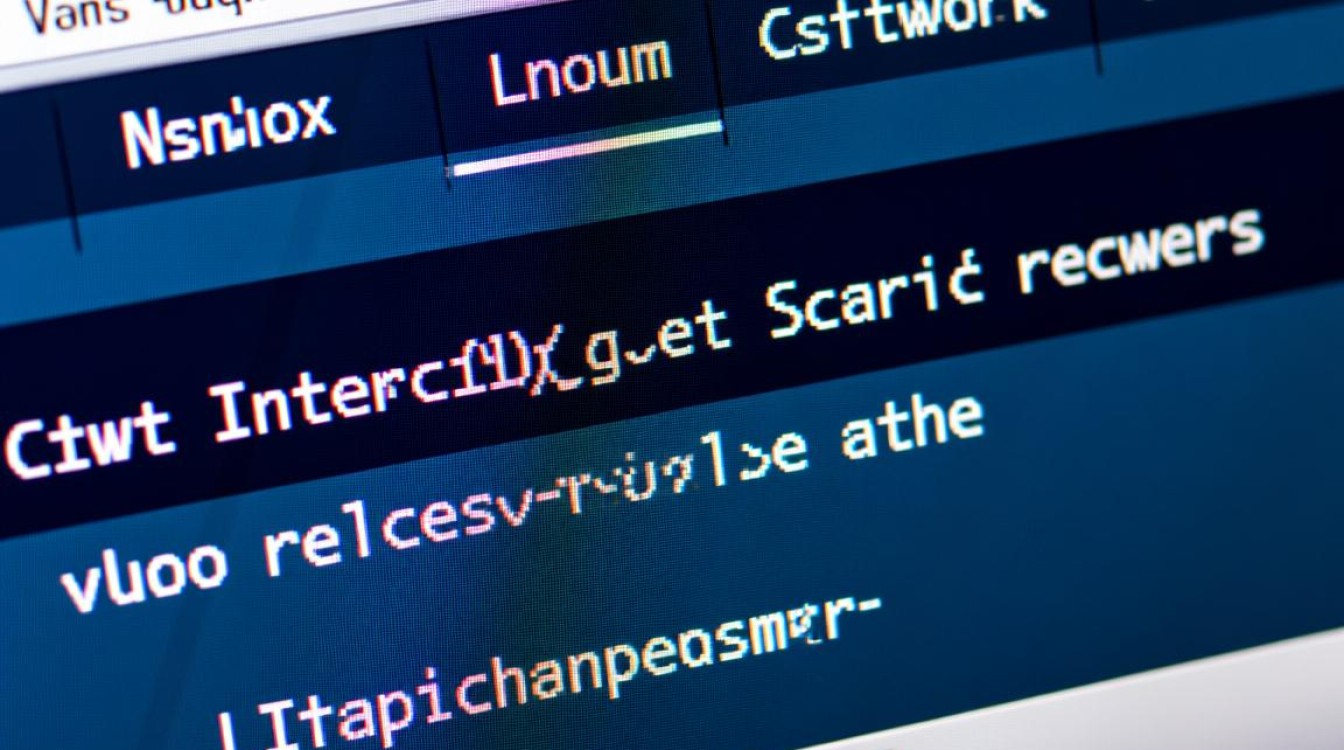在Linux系统中,时间管理是系统运维和开发中的基础操作之一,Qt作为跨平台开发框架,提供了丰富的API用于与系统交互,其中设置时间功能在需要精确时间控制的场景(如工业控制、嵌入式设备、日志记录等)中尤为重要,本文将详细介绍如何使用Qt在Linux环境下设置系统时间,涵盖底层原理、具体实现方法、权限处理及注意事项,帮助开发者掌握这一实用技能。
Linux时间管理机制概述
Linux系统的时间管理分为两个核心概念:系统时间(System Time)和硬件时间(Hardware Time),系统时间是内核维护的当前时间,通常使用自1970年1月1日以来的秒数(Unix时间戳)表示;硬件时间则由主板上的RTC(Real-Time Clock)芯片保存,即使系统断电也能持续运行,两者通过hwclock命令同步,常见同步方式包括:
- UTC模式:硬件时间存储UTC时间,系统启动时根据时区转换为本地时间(推荐使用,避免夏令时等问题)。
- 本地时间模式:硬件时间直接存储本地时间,易受时区变更影响。
Qt中设置时间需先理解这一机制,确保操作符合系统设计逻辑,避免时间不同步问题。
Qt设置时间的核心方法
Qt提供了QDateTime、QTimeZone等类处理时间数据,但直接修改系统时间需借助系统调用或第三方工具,以下是三种主流实现方式:
通过系统调用实现
Linux系统提供了settimeofday和clock_settime两个系统调用用于修改时间,分别对应struct timeval和struct timespec结构体,Qt可通过QProcess调用系统命令,或直接使用QSystemSemaphore等底层接口,示例代码如下:
#include <QProcess>
#include <QDebug>
bool setSystemTime(const QDateTime &newTime) {
// 转换为Unix时间戳
qint64 timestamp = newTime.toSecsSinceEpoch();
QString cmd = QString("sudo date -s @%1").arg(timestamp);
QProcess process;
process.start(cmd);
if (!process.waitForFinished()) {
qWarning() << "Failed to set time:" << process.errorString();
return false;
}
return true;
}
注意事项:
- 需要root权限,可通过
sudo或pkexec提升权限。 - 直接修改系统时间可能影响依赖时间的进程(如NTP服务),操作前需停止相关服务。
使用timedatectl命令(推荐)
现代Linux发行版(如Ubuntu 16.04+、CentOS 7+)使用systemd的timedatectl工具管理时间,相比传统date命令更安全且功能全面,通过QProcess调用该命令可避免直接操作硬件时间的风险:
bool setTimeWithTimedatectl(const QDateTime &newTime) {
QString cmd = QString("pkexec timedatectl set-time \"%1\"").arg(newTime.toString("yyyy-MM-dd HH:mm:ss"));
QProcess process;
process.start(cmd);
if (!process.waitForFinished()) {
qWarning() << "timedatectl failed:" << process.errorString();
return false;
}
return true;
}
优势:
- 自动处理系统时间与硬件时间的同步。
- 支持NTP服务状态管理,避免冲突。
直接写入/proc/sys/dev/rtc(仅限特定场景)
某些嵌入式系统可能需要直接操作RTC设备文件,如/dev/rtc0,此方法需确保设备有读写权限,且内核已启用RTC支持:
#include <QFile>
#include <QTextStream>
bool setRtcTime(const QDateTime &newTime) {
QFile rtcFile("/dev/rtc0");
if (!rtcFile.open(QIODevice::WriteOnly)) {
qWarning() << "Cannot open RTC device";
return false;
}
QTextStream stream(&rtcFile);
stream << newTime.toSecsSinceEpoch();
rtcFile.close();
return true;
}
适用场景:
- 无
systemd的轻量级嵌入式Linux。 - 需要精确控制RTC硬件的特殊设备。
权限管理与安全策略
由于时间设置涉及系统核心功能,Linux默认限制普通用户权限,Qt应用需通过以下方式处理权限问题:
配置sudoers文件
允许用户通过sudo执行特定命令,无需输入密码:
# /etc/sudoers username ALL=(ALL) NOPASSWD: /usr/bin/timedatectl
风险提示:过度配置可能导致安全漏洞,建议仅授予必要权限。
使用PolicyKit(推荐)
通过pkexec实现图形化权限提升,用户体验更友好,需在/usr/share/polkit-1/actions/目录创建策略文件,
<!DOCTYPE policyconfig PUBLIC
"-//freedesktop//DTD PolicyKit Policy Configuration 1.0//EN"
"http://www.freedesktop.org/software/polkit/docs/latest/PolicyKit1-policyconfig.dtd">
<policyconfig>
<action id="org.qt.example.settime">
<description>Set system time</description>
<message>Authentication is required to set system time</message>
<defaults>
<allow_any>auth_admin</allow_any>
<allow_inactive>auth_admin</allow_inactive>
<allow_active>auth_admin</allow_active>
</defaults>
</action>
</policyconfig>
权限检查流程
在调用时间设置函数前,可先检查当前用户权限:
#include <sys/types.h>
#include <unistd.h>
bool hasRootPrivileges() {
return (getuid() == 0);
}
完整实现示例与最佳实践
以下是一个完整的Qt控制台应用示例,整合了权限检查、时间设置及错误处理:
#include <QCoreApplication>
#include <QDateTime>
#include <QProcess>
#include <QDebug>
bool setTimeWithAuth(const QDateTime &newTime) {
if (!hasRootPrivileges()) {
QString cmd = QString("pkexec timedatectl set-time \"%1\"").arg(newTime.toString("yyyy-MM-dd HH:mm:ss"));
QProcess process;
process.start(cmd);
if (!process.waitForFinished(5000)) {
qCritical() << "Authentication failed or timeout";
return false;
}
if (process.exitCode() != 0) {
qCritical() << "Error:" << process.readAllStandardError();
return false;
}
} else {
QString cmd = QString("timedatectl set-time \"%1\"").arg(newTime.toString("yyyy-MM-dd HH:mm:ss"));
QProcess process;
process.start(cmd);
if (!process.waitForFinished()) {
qCritical() << "Failed to set time:" << process.errorString();
return false;
}
}
return true;
}
int main(int argc, char *argv[]) {
QCoreApplication a(argc, argv);
QDateTime targetTime = QDateTime::currentDateTime().addSecs(3600); // 设置为当前时间+1小时
qDebug() << "Target time:" << targetTime.toString("yyyy-MM-dd HH:mm:ss");
if (setTimeWithAuth(targetTime)) {
qDebug() << "Time set successfully";
} else {
qCritical() << "Failed to set time";
return -1;
}
return a.exec();
}
最佳实践总结:
- 优先使用
timedatectl:避免直接操作硬件时间,减少兼容性问题。 - 权限最小化:仅授予必要的sudo权限,或使用PolicyKit进行细粒度控制。
- 错误处理:捕获并记录
QProcess的错误输出,便于调试。 - 时区处理:使用
QTimeZone确保时间设置符合目标时区,QDateTime utcTime = QDateTime::currentDateTimeUtc().toTimeZone(QTimeZone("Asia/Shanghai"));
常见问题与解决方案
| 问题现象 | 可能原因 | 解决方案 |
|---|---|---|
sudo权限被拒绝 |
用户未加入sudo组或配置错误 | 检查/etc/sudoers文件,使用visudo编辑 |
timedatectl: command not found |
系统未安装systemd |
改用date命令或安装systemd |
| 时间设置后立即被重置 | NTP服务自动同步 | 停止NTP服务:sudo systemctl stop systemd-timesyncd |
| RTC设备无法访问 | 权限不足或内核未加载模块 | 检查设备权限:sudo chmod 666 /dev/rtc0 |
通过以上方法,开发者可以在Qt应用中安全、高效地实现Linux系统时间的设置功能,实际应用中需根据具体场景选择合适的方案,并充分考虑系统安全性和稳定性。



















